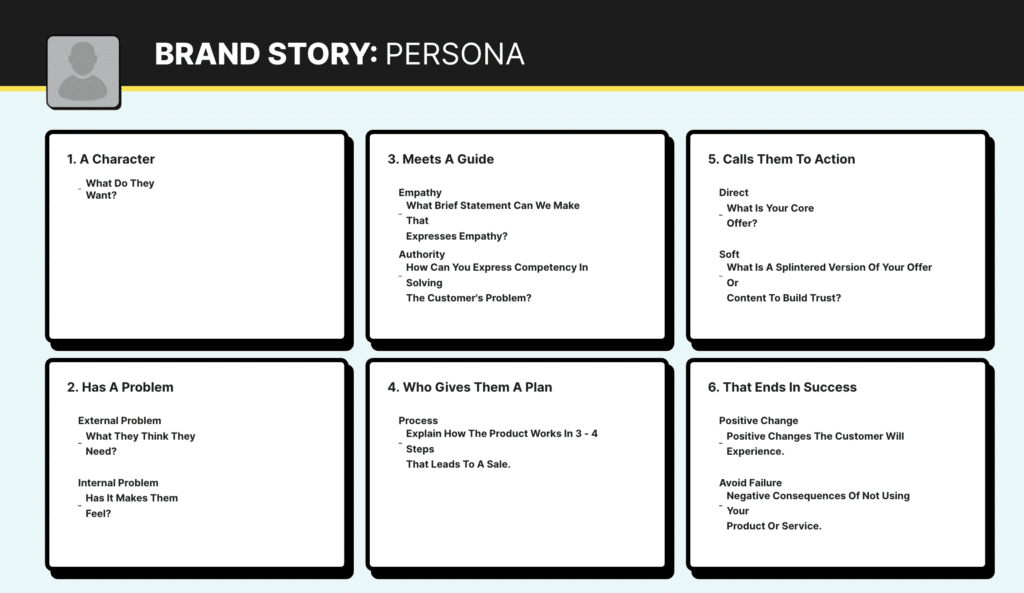Whether you just started your business and have no idea where to start or you’ve had it for a while and haven’t made progress, these small business marketing basics will help you move forward toward the success you’re chasing.
It’s a challenge to handle marketing all by yourself, especially with everything else that comes with running a business. Breaking down the basics and finding small steps you can take is the easiest way to begin moving your business forward.
To build the basic foundation for your marketing strategy you’ll want to start with three major steps:
- Preliminary work to understand your brand, even if you’ve been in business a while.
- Effectively utilizing media channels.
- Implementing best practices to keep up with your plan.
Now let’s break down each of these steps and get you started on an effective small business marketing strategy that actually works.
Step 1: Preliminary Work to Fully Understand Your Brand
You can’t accurately market your product or service if you don’t have a deep understanding of WHO you’re talking to. Before getting started with strategy, you have to go back to the basics and conduct some research.
This should involve both formal research as well as evaluating your own goals and story.
Clarify Your Business Goals
Before diving into any sort of marketing, you first need to clarify what your business goals are.
If you don’t know what you’re trying to accomplish with your business, it’s going to be really hard to market it.
You need to ask yourself a variety of questions that cover all your bases.
- What are your ultimate goals?
- Is this going to be a business that you want to grow as big as it can be?
- Is it a business that you want to grow to a certain level?
- Is it something that you want to grow to a large revenue amount or is this something that you want to keep smaller scale?
- How is the business affecting your lifestyle?
- Is this a business that you want to grow so that you pass it down to your kids one day?
- Do you want to have this business to improve your lifestyle?
- Do you only want to work 30 hours a week and have full flexibility even if it means you make less money?
- What are your goals as a business owner for this business that needs to be established?
You may not need to answer all of these questions to get to the core of your goals, but they are a great place to start.
To fully lay out your business goals, we suggest using the SMART goal method.
Solidify Your Brand
After clarifying your business goals, you need to do the same with your brand. Solidifying your brand image and everything that comes with it is essential. In this case, we’re talking about the elements of your brand that are outside of marketing.
For example, consider these questions about your current brand:
- Is it clear? As in what you do and who you serve.
- Is everything working together? From your logo to your taglines.
- Do you know who you are? Consider if this is really solidified or if you’re still feeling your way through it.
- Do you understand who you’re trying to target? You should have clearly outlined avatars.
- What are the brand’s values? These should be documented.
Once you’ve answered these questions, you can put together your unique value proposition. This is just a statement that clearly states what you bring to the table, making it easier for customers to understand what your business is and what your brand represents.
Identify Your Target Audience
Do you really know your audience? We don’t mean do you know who they are on a surface level. We’re talking do you really really know them?
Here are some more questions to ask yourself:
- Do you understand your audience?
- Do you know who they are?
- Do you know where they spend time?
- Do you know what their common challenges and problems are?
- Do you know their goals, their ambitions, and their desires?
- Do you know how to present your solution where it is desirable to them?
One way to help you do this is by filling out an avatar profile. This is simply imagining a hypothetical consumer that fits into your target audience. The information should be based on both market research as well as what your ideal customer should be.

Understand Your Story
Lastly, number four: strategically understand your story. Make sure you know how to best present the story of your brand and with that, the story of your customer.
Here at Breezy, we’re very passionate about StoryBrand. The StoryBrand Framework, developed by Donald Miller, is a great way to use storytelling to further understand your customers and to better connect with them. This framework consists of seven key elements that form the structure of an effective narrative including the character (your audience), the problem, the guide (your brand), the plan, the call to action, the success story, and the failure story. We break this down more in this guide.

Knowing how to strategically tell your story with clarity is necessary. The key to effective communication is clarity. Determining the most succinct way to communicate with potential customers how your business can improve their problems is essential.
Step 2: Make Sure You’re Effectively Utilizing All Your Channels
Now you have a solid foundation to build your marketing on. There are multiple channels that you can use to reach your target audience and stay in front of your customer base. However, you need to ensure that you’re using these channels to their full potential by consistently updating them. Let’s go through the rundown of the best channels to use and what questions you should be asking yourself about them.
Evaluate Your Website
A website is often one of the first places people go to learn more about a business. It’s quite literally your “front door.” It is essential that your website is constantly updated, incredibly clear, and user-friendly.
When someone pulls up your website, within the first five to ten seconds they should be able to know what exactly your business is and how it can help them. If that information isn’t clear, then they’ll most likely be confused, close out of your site, and move on.
A few questions to consider if you’re unsure if your website is where it should be:
- Does your site look modern and match your branding elements?
- Does the site function properly?
- Is it user-friendly?
- Are you optimizing it for better searchability?
There are so many elements that go into having a quality website and should be one of your highest areas of priority when it comes to your marketing plan.
Analyze Your Social Media Strategy
Depending on the user, another entry point into the marketing funnel for a customer is social media. Therefore, similar to your website, it needs to be updated for optimal effectiveness. This includes the content itself, but also your profile, bio, engagement, links, etc.
A lot goes into having an effective social media strategy, so we’re going to break down the basics for you below. After doing your preliminary research to determine your goals, target audience, etc, you can follow these simple steps.
Content Pillars
Before making any content, you need to figure out what your content pillars are going to be. Content pillars are just different categories of content designed to strategically target the audience in different ways. These pillars will differ for every business based on goals, platforms, industry, budget, etc.
Some examples of content pillars that you could use include…
- Educational
View this post on Instagram
A post shared by Breezy Content | Your Content Marketing Team (@breezy_content)
- Casual
View this post on Instagram
A post shared by Breezy Content | Your Content Marketing Team (@breezy_content)
- Funny
View this post on Instagram
A post shared by Breezy Content | Your Content Marketing Team (@breezy_content)
View this post on Instagram
A post shared by Breezy Content | Your Content Marketing Team (@breezy_content)
- Client-focused: Reviews, testimonials, success stories
View this post on Instagram
A post shared by Breezy Content | Your Content Marketing Team (@breezy_content)
- Products/Services
View this post on Instagram
A post shared by Breezy Content | Your Content Marketing Team (@breezy_content)
…and many more. The pillars you choose will depend on your unique situation.
After picking your pillars, you will then use them to build out your content strategy and plan. For example, a consultant might choose educational, thought leadership, and success stories as their pillars. Then, when planning ahead for their content they would do 60% thought leadership, 30% educational content, and 10% success stories. Using pillars is a great way to make sure you’re hitting all the areas that you want to cover with your content.
Social Media Platforms
At the same time, you need to determine which social media platforms you should use. There are so many to pick from, so based on your target audience and your goals, you should pick the ones most suited to your business’s needs. Don’t spread yourself too thin, but also don’t limit yourself.
There are some pretty standard platforms that almost any business can benefit from such as Facebook, Instagram, LinkedIn, and most recently TikTok. TikTok is definitely more of a gamble, but we’ve seen countless businesses ranging from brick-and-mortar stores to thought leaders to doctors have success there.
Ultimately, pick the ones you think you’ll have the best chance of connecting with potential customers and go from there. You can always shift gears if you’re not having success or want to try something new.
Create Content
Now you can start creating content that fills in your content pillars. Use a content calendar to plan out your content in advance so that you don’t miss anything.
Then, simply create your content. We know–it sounds easier than it is. But, try to have fun with it. Put your creativity to the test by making graphics, filming videos, and writing captions. There are so many resources available to help you with creating content.
If you decide that creating content is too difficult, then don’t worry, there’s a solution for that too. You can just hire an external content creator to make everything for you and take that added stress off your plate. BTW: we can create content for you.
Measure Results
Finally, after creating and posting your content, you need to measure the results. This means looking at the analytics to see the reach, engagement, likes, comments, etc. The place to find this information differs from the platform, but in most cases, you can find it on your profile homepage.
After tracking these metrics, you can use that data to make informed decisions going forward with your plan. On posts that get better numbers, use them for inspiration for new ones. If a certain type of post consistently doesn’t perform well, don’t make that style of content anymore, or shift your approach.
You can use these metrics to both track your results and improve your content strategy.
Email Marketing
Despite the fact that email marketing has been around for decades, some question its legitimacy in this current age of social media. However, email marketing is still an essential part of a marketing strategy. Through social media content, you can get leads to sign up for email marketing. Or, you can get customers to join your email list to keep up with the brand or to gain valuable insights. From there, you can leverage these emails to keep existing customers and gain new ones.
Traditionally, email marketing is used to promote sales content. While that can be part of the content you’re sending out, you should also be mailing value-based content. This non-sales-based content is important for continuing to build that credibility and authenticity, and to keep your brand at the top of your audience’s mind. If you only send out sales content, then users are likely going to be annoyed and unsubscribe. Make sure your emails are actually providing value.
Examples of value-based emails include tips and tricks, helpful ideas, and other informative content you’re making for other channels. These types of emails are going to be more engaging and just overall more effective for your business.
Paid Advertising
Finally, over time, you’ll want to start putting dollars behind your marketing efforts. There are so many types of paid advertising and the ones you use solely depend on your budget and your business.
Maybe a traditional television commercial is the way to go. Similarly, an ad that runs on YouTube and streaming services. Perhaps simply running ads on social media platforms like Facebook and Instagram would be most effective. There are also more unconventional ways to go about paid advertising such as a sponsored podcast or influencer marketing. Maybe you even go more traditional with pay-per-click advertising or outbound email marketing.
Truly the type of paid advertising that you use depends on how good of a fit it is for your brand, your budget, and your expected outcome.
Step 3: Follow Best Practices to See Success in Your Marketing Plan
After choosing the best channels and methods of marketing to use, there are a few things that you need to keep up with to have the most success. There are some simple best practices that if followed, will lead to a more effective marketing plan.
Stay Consistent & Frequently Update Your Information
One of the biggest mistakes we see businesses make is when they lack consistency. After going through the whole process of research, planning, and creation, you unfortunately cannot stop there. In order to fully get what you need out of content marketing, you need to keep up with it.
This means you need to come up with a publishing schedule for all of your content marketing tactics and stick with it. If that means all you can do is post once a week that’s fine. Just try not to only post when you have time or feel like it because that will just lead to a failed marketing plan.
Staying consistent doesn’t just apply to social media. You need to be consistent with every aspect of your marketing plan if you want to see results. Regularly send out emails, update commercials, and edit your website. This is essential to an effective marketing strategy.
Post High-Quality Content
Posting consistently is important, but so is posting high-quality content. If the content you’re posting isn’t worth your audience’s time, they’re going to scroll right past it–plain and simple.
Instead, make sure that even if it means posting less, you are posting content that is valuable. Your audience can tell when something was just thrown together for the sake of posting. That’s is why it so important to take your time when creating content or any other marketing material.
So the next time you’re working on a post, a video, a commercial, whatever it may be, ask yourself: “Do I feel confident that this is important to my audience and accurately represents my brand?”
If the answer is yes, then go ahead and share it. But, if the answer is no, then reevaluate the material and make the necessary changes. The added time it takes will really make a difference in building your overall brand image.
Focus on Clarity
Finally, in everything you do, focus on clarity. Whether it’s an email, a website headline, a blog post, or a video, make sure it clearly communicates a message. As Donald Miller from StoryBrand says, being creative is not nearly as important as being clear.
While you may feel inclined to add extra words, designs, or pictures, first ensure that your message is clear–that is what’s most important.
Final Advice For Your Small Business Marketing
By combining all of this information, you can create an effective marketing strategy for your small business. All of these steps need to be working together in tandem for you to see the best results. Think of the steps as the spindles of a wheel. When they’re all in alignment and rolling together, you can make significant traction.
If you feel like you’d rather do just about anything other than content marketing, we get it and we can help you with that. Here at Breezy, we will create this plan for you, make your content, and handle all that maintenance–no stress needed. If you’re interested, click here.
Ready to Launch a Content Marketing Plan for Your Small Business?
We know that carving out the time, resources, and energy to create ongoing content for your brand or business is a full-time job. That’s why we created Breezy – your instant content marketing team.
You don’t need to hire multiple full-time employees to handle all of the strategy, planning, writing, designing, and publishing of content. You also don’t have time to wrangle tons of different freelancers to get this all completed. You need one expert team that can help get all of the amazing thought-leadership and subject matter expertise out of your head and into formalized, engaging content that keeps you top of mind with your audience.
We’re that team!
See how we can help your small business, startup, or agency with a free consultation.







